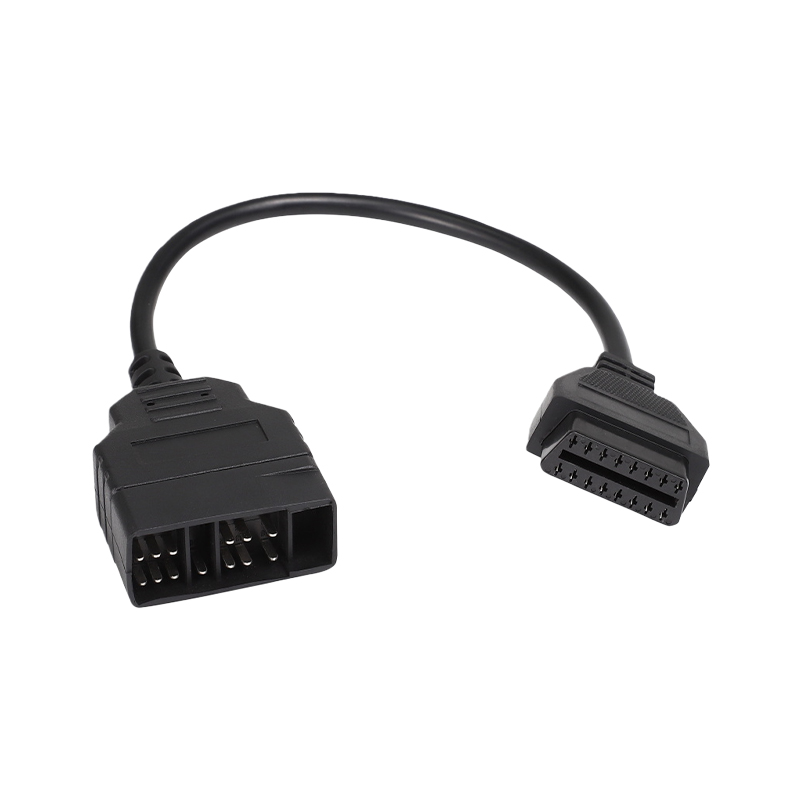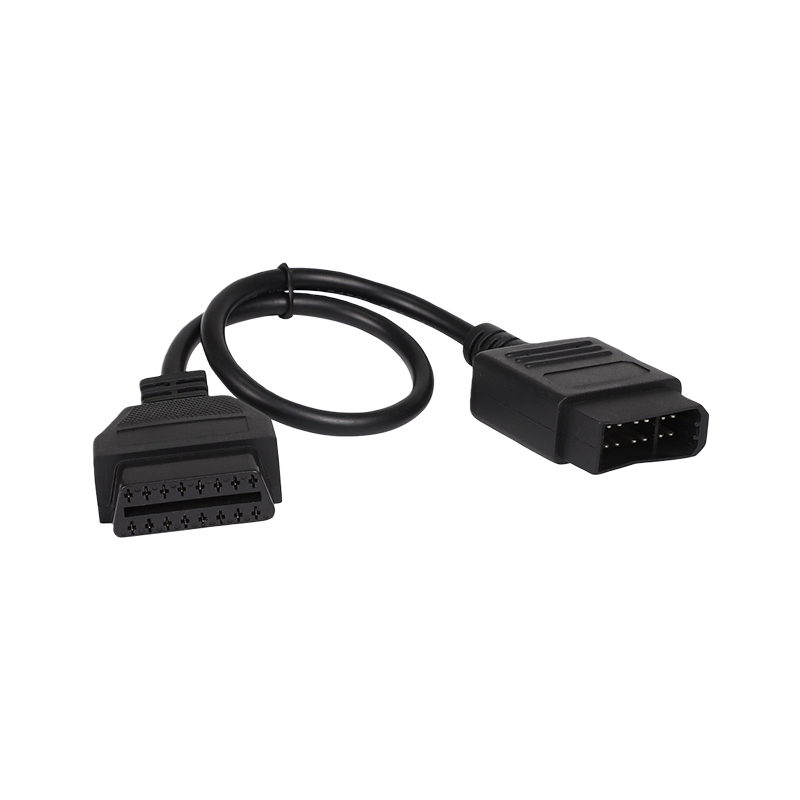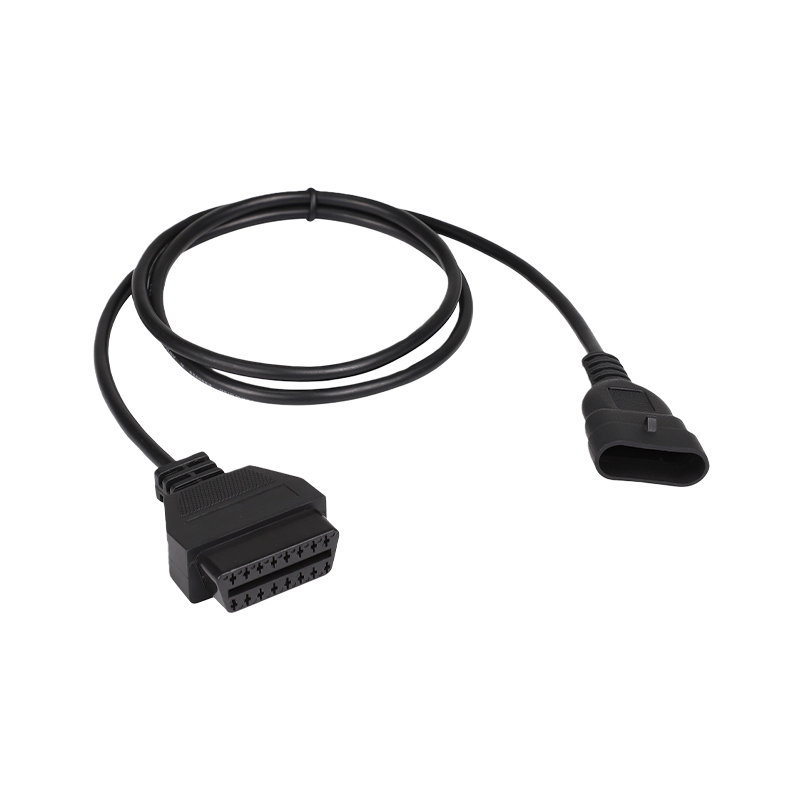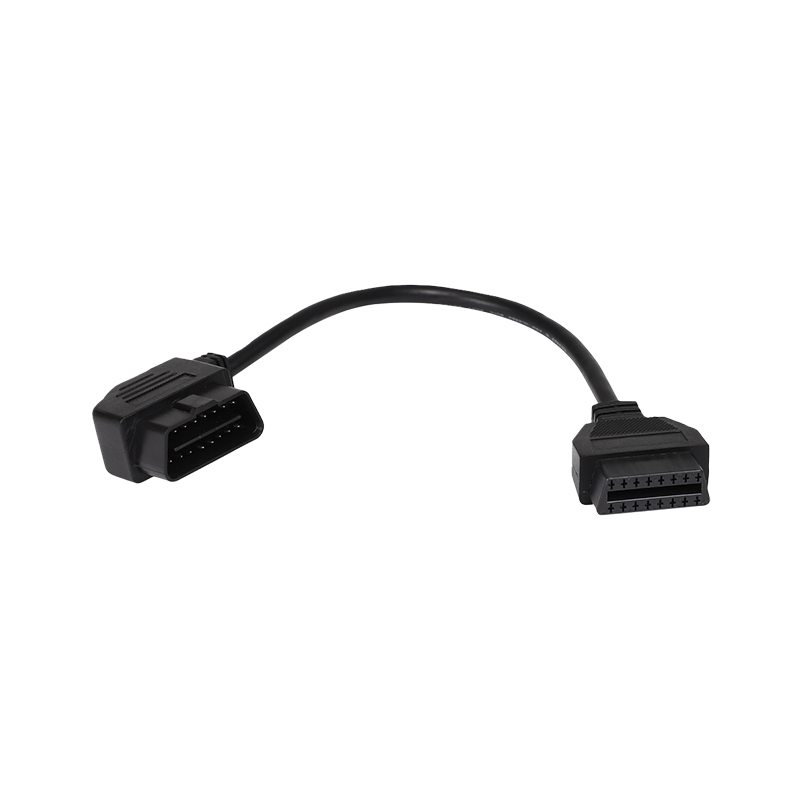How does a locking mechanism prevent accidental disconnection during driving?
Release Time : 2025-10-14
In the electronic systems of heavy-duty vehicles, construction machinery, and commercial vehicles, the 9-pin diagnostic connector plays a crucial role—it serves as the bridge between the vehicle's brain and external diagnostic equipment, transmitting critical information such as engine data, fault codes, and sensor signals. However, vehicles are exposed to bumpy roads, intense vibration, frequent starts and stops, and complex weather conditions during operation. Any loose connection can lead to communication interruption, compromising diagnostic efficiency at best and causing misdiagnosis or system failure at worst. Therefore, ensuring a secure connector connection under dynamic conditions becomes a core design challenge. The locking mechanism is a sophisticated mechanism designed to address this issue. It not only ensures a secure physical connection but also contributes to the reliability and safety of the entire vehicle's electronic system.
The essence of a locking mechanism is to establish a mechanical lock between the plug and socket that goes beyond simple insertion. Conventional connectors rely solely on friction between the pin and socket to maintain a connection. However, under constant vibration, this friction can gradually weaken, resulting in poor contact or even complete disconnection. The 9-pin diagnostic connector with a locking feature securely secures the two connectors together through a specific mechanical mechanism, such as threaded fastening, snap-on locking, or push-pull self-locking. This locking mechanism is not a temporary locking mechanism, but rather an active preload. This ensures that the internal terminals maintain close contact even when subjected to external impact or strain, preventing signal transmission interruption due to minor displacement.
In practical applications, this locking mechanism is often designed to be both reliable and convenient. For example, an outer threaded design allows operators to manually tighten the plug into the receptacle, creating a secure connection similar to "screw into nut." This structure effectively resists lateral and axial forces from cable pull or vehicle movement, ensuring a secure connection even on rugged mountain roads or on bumpy construction sites. Another common snap-on locking mechanism uses a spring arm to engage a groove for quick locking, making it easy to operate and suitable for frequent plugging and unplugging maintenance scenarios. Regardless of the locking mechanism, the locking mechanism is meticulously calculated and repeatedly tested to ensure continued elasticity and strength over long periods of use, without failure due to metal fatigue or plastic aging. In addition to preventing detachment, the locking mechanism also improves the seal of the connection. Many heavy-duty vehicles have diagnostic interfaces located near the chassis or engine compartment, exposed to harsh environments such as rain, dust, and oil. The locking action often compresses the sealing ring, completely sealing the gap between the plug and receptacle, effectively sealing out dust and water. This integrated seal not only protects the internal metal terminals from corrosion but also prevents short circuits or signal interference caused by moisture intrusion, further enhancing system stability.
From a user experience perspective, the design of the locking mechanism must also take ergonomics into account. Maintenance personnel should be able to easily lock and unlock the connector even in confined spaces or while wearing gloves. Therefore, the structure's contours are often optimized to provide ample gripping surfaces or anti-slip grooves to prevent slipping or excessive force. Furthermore, the locking state is often accompanied by clear tactile or audible feedback—such as a "click"—allowing operators to confirm the connection without visual inspection, improving work efficiency and safety.
More fundamentally, the existence of the locking mechanism represents a redefinition of the very act of "connection." It's no longer just a "plug and go" solution; it emphasizes the safety concept of "plug and lock." With the increasing prevalence of intelligent connectivity and remote diagnostics, a vehicle's electronic systems must continuously and stably output data. Any unexpected disconnection could impact the accuracy of fleet management, remote monitoring, or fault warnings. A reliable locking mechanism is fundamental to ensuring this unbroken data chain.
In summary, the 9-pin diagnostic connector, with its locking design, prevents accidental disconnection during driving. It represents a solution that deeply integrates mechanical engineering, materials science, and practical operating conditions. With subtle structural changes, it safeguards the vast flow of data, silently persevering through every bump, ensuring the vehicle's "nervous system" remains unimpeded. This seemingly simple locking mechanism is, in fact, the most solid commitment to industrial reliability.
The essence of a locking mechanism is to establish a mechanical lock between the plug and socket that goes beyond simple insertion. Conventional connectors rely solely on friction between the pin and socket to maintain a connection. However, under constant vibration, this friction can gradually weaken, resulting in poor contact or even complete disconnection. The 9-pin diagnostic connector with a locking feature securely secures the two connectors together through a specific mechanical mechanism, such as threaded fastening, snap-on locking, or push-pull self-locking. This locking mechanism is not a temporary locking mechanism, but rather an active preload. This ensures that the internal terminals maintain close contact even when subjected to external impact or strain, preventing signal transmission interruption due to minor displacement.
In practical applications, this locking mechanism is often designed to be both reliable and convenient. For example, an outer threaded design allows operators to manually tighten the plug into the receptacle, creating a secure connection similar to "screw into nut." This structure effectively resists lateral and axial forces from cable pull or vehicle movement, ensuring a secure connection even on rugged mountain roads or on bumpy construction sites. Another common snap-on locking mechanism uses a spring arm to engage a groove for quick locking, making it easy to operate and suitable for frequent plugging and unplugging maintenance scenarios. Regardless of the locking mechanism, the locking mechanism is meticulously calculated and repeatedly tested to ensure continued elasticity and strength over long periods of use, without failure due to metal fatigue or plastic aging. In addition to preventing detachment, the locking mechanism also improves the seal of the connection. Many heavy-duty vehicles have diagnostic interfaces located near the chassis or engine compartment, exposed to harsh environments such as rain, dust, and oil. The locking action often compresses the sealing ring, completely sealing the gap between the plug and receptacle, effectively sealing out dust and water. This integrated seal not only protects the internal metal terminals from corrosion but also prevents short circuits or signal interference caused by moisture intrusion, further enhancing system stability.
From a user experience perspective, the design of the locking mechanism must also take ergonomics into account. Maintenance personnel should be able to easily lock and unlock the connector even in confined spaces or while wearing gloves. Therefore, the structure's contours are often optimized to provide ample gripping surfaces or anti-slip grooves to prevent slipping or excessive force. Furthermore, the locking state is often accompanied by clear tactile or audible feedback—such as a "click"—allowing operators to confirm the connection without visual inspection, improving work efficiency and safety.
More fundamentally, the existence of the locking mechanism represents a redefinition of the very act of "connection." It's no longer just a "plug and go" solution; it emphasizes the safety concept of "plug and lock." With the increasing prevalence of intelligent connectivity and remote diagnostics, a vehicle's electronic systems must continuously and stably output data. Any unexpected disconnection could impact the accuracy of fleet management, remote monitoring, or fault warnings. A reliable locking mechanism is fundamental to ensuring this unbroken data chain.
In summary, the 9-pin diagnostic connector, with its locking design, prevents accidental disconnection during driving. It represents a solution that deeply integrates mechanical engineering, materials science, and practical operating conditions. With subtle structural changes, it safeguards the vast flow of data, silently persevering through every bump, ensuring the vehicle's "nervous system" remains unimpeded. This seemingly simple locking mechanism is, in fact, the most solid commitment to industrial reliability.







